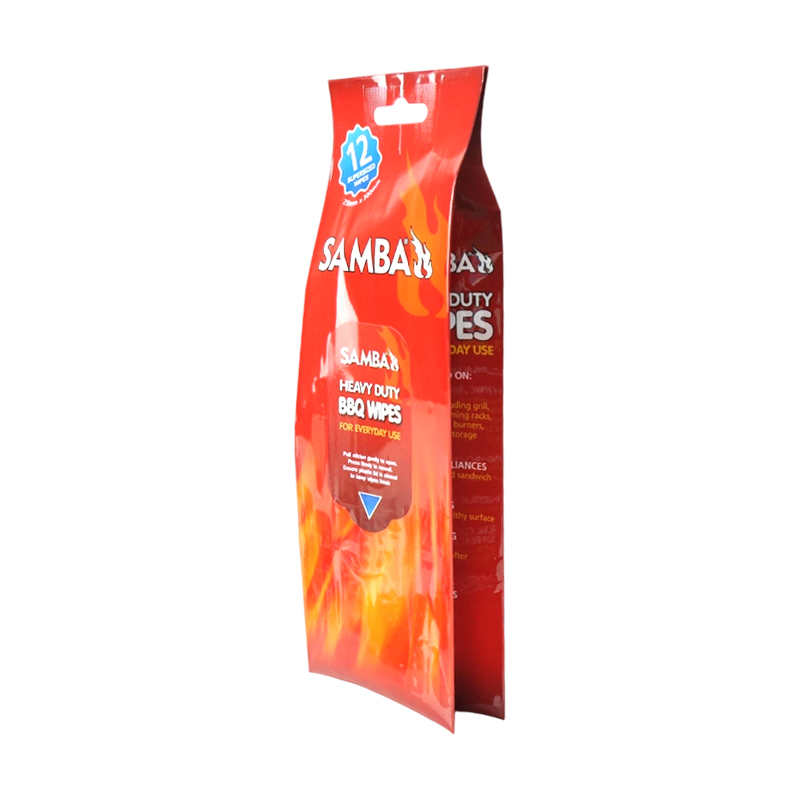2025-07-24
As the global market for wet wipes continues its steady growth, driven by increased hygiene awareness and versatile applications, packaging innovations have become central to delivering product freshness, ease of use, and strong brand communication. Among these innovations, labeled wet wipe packaging bags have emerged as a packaging solution, combining functional benefits with effective branding opportunities to meet the evolving needs of both manufacturers and consumers.
What Are Labeled Wet Wipe Packaging Bags?
Labeled wet wipe packaging bags are flexible pouches designed specifically to house wet wipes, featuring a printed label or directly printed surface that provides product information, branding, and usage instructions. Unlike generic or unmarked packaging, these bags integrate high-quality labels that help convey brand identity and product differentiation while offering protective benefits such as moisture retention and hygienic sealing.
Typically, these bags are made from multi-layer laminated films that ensure durability and moisture barriers, while the labels use durable inks and materials that withstand handling, moisture, and temperature variations.
Core Benefits Driving Market Adoption
Maintaining Wet Wipe Freshness: The primary functional goal of wet wipe packaging bags is to keep wipes moist and ready for use. Labeled bags utilize films with moisture barrier properties combined with secure sealing methods (such as resealable adhesive labels or zipper closures) that minimize evaporation and contamination.
Enhancing Brand Recognition: High-quality printed labels enable manufacturers to communicate their brand story, ingredients, certifications, and usage benefits clearly. Eye-catching designs and consistent branding help products stand out on crowded retail shelves and build consumer loyalty.
Consumer Convenience: Many labeled packaging bags incorporate user-friendly features such as resealable flaps, easy-peel labels, or zippers, allowing consumers to access wipes conveniently while preserving product freshness between uses.
Cost-Effective and Flexible: Compared to rigid packaging or complex dispensing mechanisms, labeled wet wipe bags offer an economical solution that is lightweight, space-efficient, and adaptable to various pack sizes and shapes.
Tamper Evidence and Safety: Properly designed labels can include tamper-evident seals, reassuring consumers that the product has not been compromised before purchase.
Materials and Design Considerations
Labeled wet wipe packaging bags are commonly produced using composite films composed of materials such as polyethylene (PE), polypropylene (PP), polyester (PET), and aluminum foil, laminated together to balance flexibility, barrier performance, and printability.

The label materials themselves vary from pressure-sensitive adhesive films to heat-sealable labels that bond securely to the packaging surface. Advances in printing technologies, including flexography, digital printing, and rotogravure, allow for vibrant, durable graphics that resist smudging and fading.
Design trends favor clear or semi-transparent packaging sections to allow consumers to see the product inside, complemented by strategically placed labels that deliver branding and information without obstructing visibility.
Industry Applications and Consumer Trends
Labeled wet wipe packaging bags are widely used across different segments:
Baby Care: Packaging that communicates gentleness, hypoallergenic properties, and pediatrician endorsements is crucial, with designs often emphasizing softness and safety.
Personal Hygiene: Antibacterial and sanitizing wipes require secure sealing and clear labeling to inform consumers about effectiveness and usage guidelines.
Household Cleaning: Durable packaging that withstands moisture and frequent handling while conveying cleaning power is key.
Industrial and Medical Uses: Specialized wipes demand packaging that preserves sterility and offers compliance information prominently.
The rise of on-the-go lifestyles has heightened the need for portable, resealable packaging that fits easily into bags or pockets, influencing bag sizes and label designs.
Innovations Elevating Labeled Wet Wipe Packaging
Recent developments include:
Sustainable Materials: Incorporating recyclable films, biodegradable components, and water-based inks to meet growing environmental expectations.
Smart Labels: Integration of QR codes and NFC technology on labels enhances consumer engagement, offering product information, promotions, and authentication.
Ergonomic Features: Improved label adhesives and peel-off designs enhance ease of access, especially for elderly or disabled users.
Enhanced Barrier Films: Innovations in multilayer films further reduce moisture loss, extending product usability.